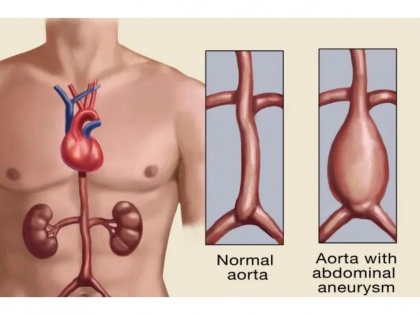Thumb tests reveals if you are at risk of serious heart disease
By Lokmat English Desk | Published: September 14, 2021 06:00 PM2021-09-14T18:00:50+5:302021-09-14T18:02:45+5:30
If you want to know whether you are at risk of a heart disease you just have to take ...

Thumb tests reveals if you are at risk of serious heart disease
If you want to know whether you are at risk of a heart disease you just have to take a simple thumb test. The test involves twiddling your thumbs that will help you spot a hidden aortic aneurysm.
What exactly is abdominal aortic aneurysm (AAA)?
It is a swelling in the aorta, the main blood vessel that runs from the heart down through the chest and tummy. The bulge does not pose any risk to your life but if you ignore the problem then it may get worse. AAA disease have no symptoms and are diagnosed after screening. If you ignore it the swelling might become large and might burst and cause internal bleeding and possibly death. About 8 in 10 people with the swelling if detected late will die before they reach for medical help or they might not even survive surgery.
But doctors at Yale University School of Medicine say people can check their own risk with a reliable test.
Here's how you can take the test:
- To do the “thumb palm test”, hold up one hand and keep the palm flat.
- Stretch the thumb as far as possible across the palm.
- If it crosses beyond the far edge of the flat palm, you may be harbouring a hidden aneurysm.
- If you are able to move your thumb beyond the far edge of palm is an indirect indication that a person’s joints are lax.
People who are at risk:
- All men aged 66 or over are at risk of an aortic aneurysm.
- Women aged 70 or over who have one or more of the following risk factors are also at higher odds:
- high blood pressure
- chronic obstructive pulmonary disease
- high blood cholesterol
- a family history of AAA
- cardiovascular disease, such as heart disease or a history of stroke
- history of smoking
Here's how you can reduce your risk:
- stopping smoking
- eating healthily
- exercising regularly
- cutting down on alcohol